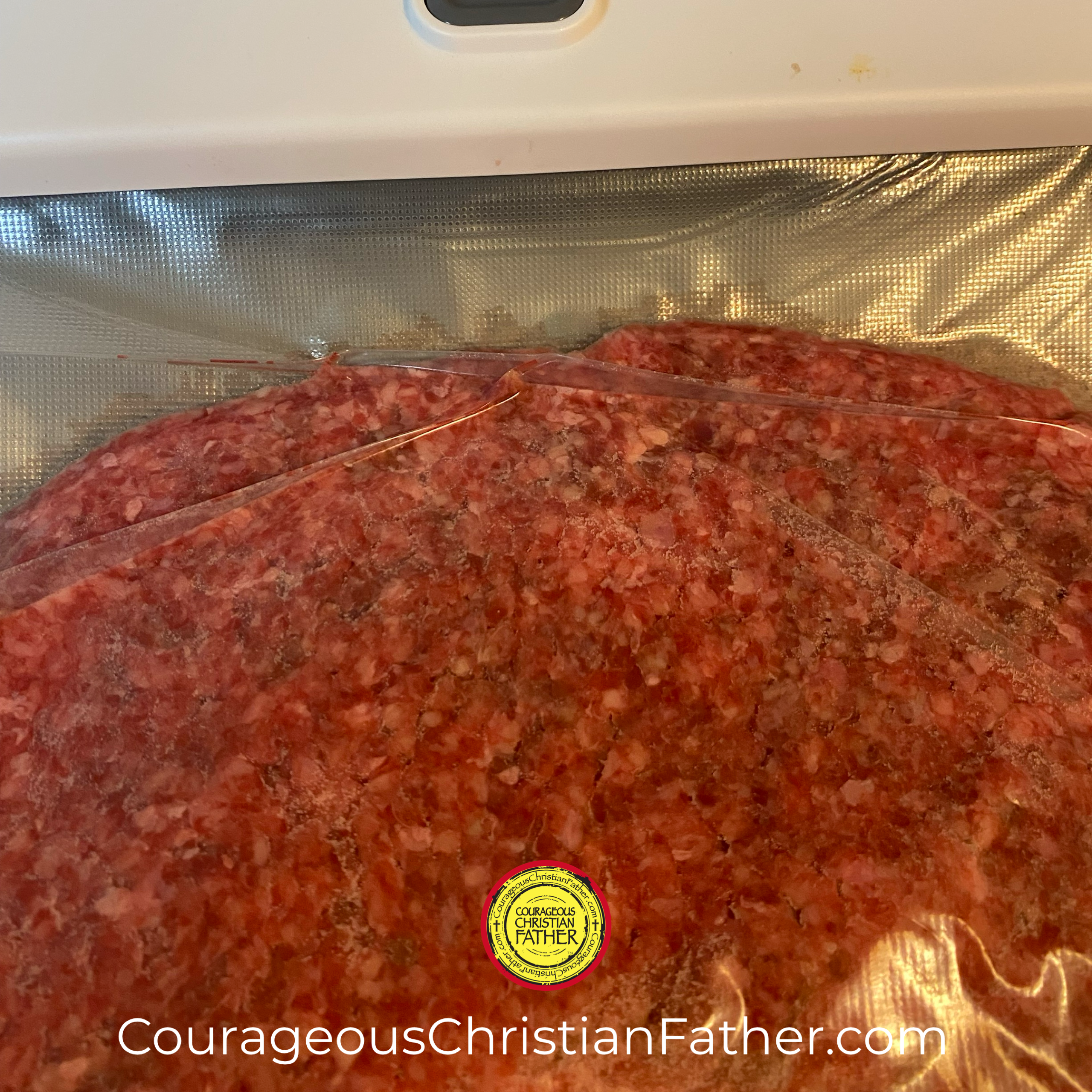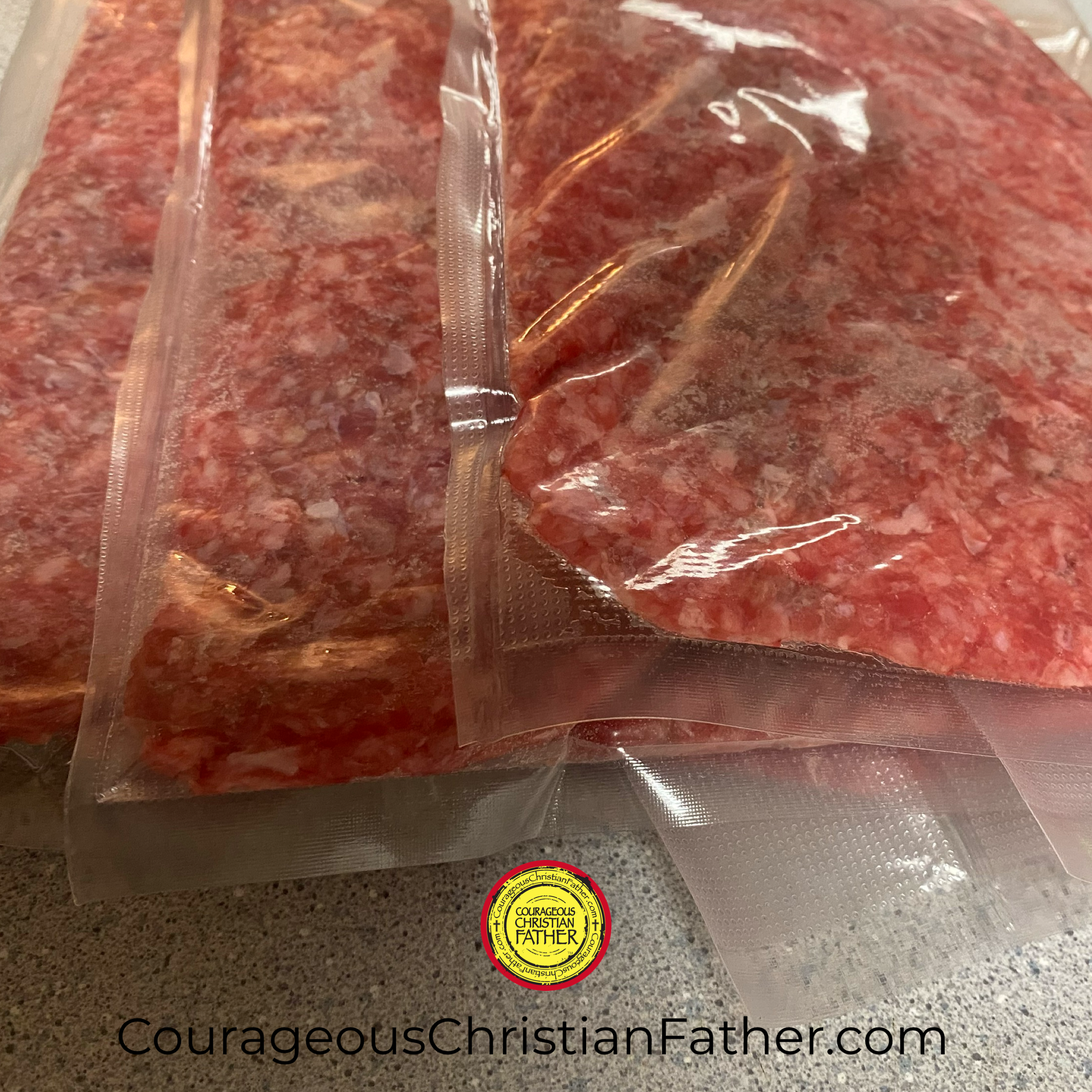When freezing ground meat, flatten it before you freeze it! Every inch of space in our freezers counts, and every minute saved in meal preparation matters. One simple yet often overlooked technique that can revolutionize the way we store and handle ground meat is flattening it before freezing. Not only does this method save precious freezer space, but it also accelerates the defrosting process when it’s time to cook. Let’s dive into the practical benefits and steps of flattening ground meat before freezing.
When freezing ground meat, flatten it before you freeze it!

Maximizing Freezer Space:
Anyone who has played Tetris with their freezer knows the struggle of fitting in bulky containers and awkwardly shaped packages. By flattening ground meat before freezing, you can transform a bulky mound into a compact, stackable slab. This simple act can create extra room for other essentials, minimizing clutter and optimizing storage space. Whether you have a small apartment-sized freezer or a spacious chest freezer, every cubic inch saved is a victory.
Faster Defrosting:
Beyond the space-saving benefits, flattening ground meat before freezing can significantly expedite the defrosting process. Thinner portions of meat thaw much more quickly and evenly compared to a thick block. This means you can go from freezer to frying pan in a fraction of the time, making last-minute meal prep a breeze. Whether you forgot to take out the meat in advance or simply have a spontaneous craving, flattened ground meat is your culinary lifesaver.
Steps to Flattening Ground Meat:
Flattening ground meat is a straightforward process that requires minimal effort but yields substantial rewards. Here’s a simple guide to get started:
- Portion the Meat: Divide the ground meat into individual serving sizes or portions that align with your typical recipes. This step ensures you have the right amount of meat for each occasion.
- Place on Parchment Paper: Lay a sheet of parchment paper on a flat surface. Parchment paper prevents the meat from sticking and makes it easier to handle.

- Flatten the Meat: Using a rolling pin or your hands, gently flatten each portion of ground meat until it forms an even, uniform thickness. Aim for a thickness of around 1/2 inch to 1 inch, depending on personal preference.
- Stack and Freeze: Once flattened, stack the portions of meat on top of each other, separated by parchment paper if necessary to prevent sticking. Transfer the stack to a freezer-safe container, resealable plastic bags, or vacuum seal bags, ensuring they’re labeled with the date for easy identification.
- Freeze and Enjoy: Place the container or bags in the freezer, making sure they’re stored flat to maintain their shape. When it’s time to cook, simply remove the desired portion, and defrost as needed. Watch as your flattened ground meat thaws in record time, ready to be transformed into a delicious meal.
Types of Ground Meat:
Ground meat refers to meat that has been finely chopped or ground into small pieces. It can come from various sources, each offering its own unique flavor and texture. Here are some common examples of ground meats:
- Beef: Ground beef is perhaps the most popular type of ground meat and is commonly used in dishes like burgers, meatballs, tacos, and pasta sauces. It comes in different fat percentages, ranging from lean (e.g., 90/10, 93/7) to regular (e.g., 80/20).
- Pork: Ground pork is versatile and adds a rich flavor to dishes like meatloaf, sausage rolls, dumplings, and stir-fries. It often contains a higher fat content than ground beef, adding moisture and tenderness to cooked dishes.
- Chicken: Ground chicken is a lean alternative to beef and pork, making it a popular choice for healthier recipes. It’s commonly used in dishes like chicken burgers, meatballs, tacos, and chili.
- Turkey: Ground turkey is similar to ground chicken in terms of leanness and is often used as a substitute for ground beef in recipes like turkey burgers, meatloaf, chili, and stuffed peppers.
- Lamb: Ground lamb has a distinct, slightly gamey flavor and is commonly used in Mediterranean and Middle Eastern cuisines. It’s delicious in dishes like lamb kebabs, meatballs, moussaka, and shepherd’s pie.
- Veal: Ground veal has a tender texture and delicate flavor, making it a prized ingredient in dishes like meatballs, meatloaf, veal Bolognese sauce, and veal piccata.
- Bison: Ground bison, or buffalo meat, is lean and has a slightly sweet and rich flavor. It’s a nutritious alternative to beef and is used in recipes like bison burgers, chili, meatloaf, and tacos.
- Venison: Ground venison, from deer or other game animals, has a robust flavor and lean profile. It’s commonly used in dishes like venison chili, meatballs, burgers, and stews.
These are just a few examples of the many types of ground meats available. Each type offers its own unique taste and nutritional profile, allowing for endless culinary possibilities in the kitchen.
Conclusion:
This kitchen hack of flattening ground meat before freezing stands out as a simple yet remarkably effective technique. By maximizing freezer space and expediting the defrosting process, this method streamlines meal preparation and ensures you’re always ready to whip up a tasty dish at a moment’s notice. So, the next time you’re stocking up on ground meat, don’t overlook the power of the rolling pin—flatten away and reap the rewards of a more efficient kitchen.
You can use freezer bags or even vacuum seal bags I personally prefer to use vacuum seal bags.
Check out Courageous Christian Father’s Wish list on Amazon where you can purchase and this items sent directly to him and they will be used for the ministry.
Subscribe To Courageous Christian Father!
Don’t miss any blog posts! Subscribe today! You can subscribe via WordPress or by entering your email! Thank you!
Follow Courageous Christian Father on WordPress.comFollow Courageous Christian Father on Social Media
Recent Posts:
Below are some examples of blog entries from all the blogs that I do. (Courageous Christian Father, Steve Sews Stuff, SteveZ DuckZ, and SteveZ DesignZ).
Thank You For Reading Courageous Christian Father!
Thank you for reading. Please feel free to share and like this blog post.
Clipart: Unsplash, Pixabay, Pexels, Openverse, Adobe Express, Adobe Stock, FreePik, MetroCreative, and more. This site uses Amazon Affiliate Ads & Google Ads.
About the Author
Discover more from Courageous Christian Father
Subscribe to get the latest posts sent to your email.


